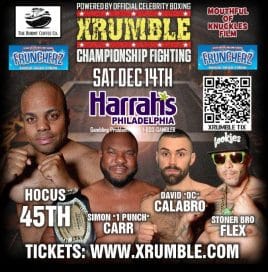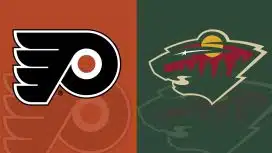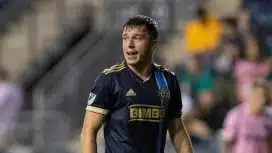Phillies
A brief history of Phillies deadline trades
But in 2000, injuries and and loses piled up and the club began to sell off players as they finished the season with 97 losses in a year that began with visions of a winning record for the first time since 1993. It sent a message to Rolen – right or wrong – that the Phillies weren't willing to spend patience or money to build a winner.
In 2001, Rolen rejected a 10-year, $140 million extension, questioning the club's commitment to winning and demanded a trade. It didn't help that his relationship with Wall of Fame player and then manager Larry Bowa was poor. Rolen was traded to the St. Louis Cardinals along with Doug Nickle and cash in exchange for Placido Polanco, Bud Smith and Mike Timlin. Polanco played well for the Phillies in his first stint with the club over four seasons.
Without a doubt, the Phillies lost the Schilling and Rolen trades. None of the players the Phillies received in return made a difference at the big league level in terms of driving the club to the postseason. Schilling wound up winning two World Series titles with Arizona and Boston, including his infamous performance against the Yankees in the 2004 ALCS on a sutured tendon. Rolen continued his acrobatic play in St. Louis and won a World Series with the team in 2006. Both players are, in my opinion, serious considerations for induction into the Hall of Fame. Forget what they said or were assumed to have said to the media or on social media, inside the lines, both players deserve a healthy look by BBWAA voters.
Now that we've got the irritating and painful trades out of the way, it's time to focus on trades that brought the Phillie faithful serious jubilee. The Phillies were a favorite to repeat as National League champion following their run to the 2008 World Series championship. After Cole Hamels, the Phillies rotation in the summer of 2009 included Joe Blanton, J.A. Happ, Jamie Moyer, Chan Ho Park and Brett Myers. New GM Ruben Amaro had his eyes set on the cream of the crop: Blue Jays pitcher Roy Halladay. But when talks with Toronto broke down because Philadelphia wouldn't include top prospect Domonic Brown, Amaro focused his efforts on Cliff Lee. Lee was 22-3 with a 2.54 in 2008, good enough for the AL Cy Young Award.
The trade deadline was all Phillies fans could talk or think about in 2009 leading up to the final days of July. The Phillies struck a deal with Cleveland that sent Carlos Carrasco, Jason Donald, Lou Marson and Jason Knapp to the Indians in exchange for Lee and outfielder Ben Francisco. Carrasco, Donald and Marson were highly touted prospects in the Phillies organization, who felt that Donald and Marson would develop and continue the success the club started a few years prior. Consistency is important if an organization wants to be considered among the upper echelon of major league clubs. But the Phillies were in a unique "win now" position. Trading for Lee proved to be an overwhelming success. The fanbase fell in love with the player and vice versa. Lee helped lead the club back to the World Series and although they lost to the Yankees in the fall classic, he provided arguably the most memorable moment of that series with his nonchalant catch in the sixth inning in Game One.
Todd Zolecki and Jim Salisbury detailed the strange situation in the offseason that still has fans scratching their heads. In their book The Rotation, Zolecki and Salisbury explain that the club was in a precarious position. It was no secret that the Phillies wanted to bolster their rotation with Roy Halladay. But keeping Cliff Lee proved to be problematic. Lee and his agent Darek Braunecker wanted Philadelphia to extend Lee's contract. Under advice from adviser and former GM Pat Gillick, the club did not feel comfortable offering the ace a long-term extension. Their core players were either already in large contracts or would be up for sizable extensions soon. With that in mind, the Phillies braintrust offered Lee a three year deal at $18 million per year. The money was good but Lee and Braunecker wanted more years. The Phillies also had reservations about locking up a pitcher like Lee, who just a few years prior had been sent down to Triple A and had some injury concerns, to a long term contract that would cover not only prime years but also post-prime.
The Phillies acquired Halladay in December 2009 in exchange for Travis d'Arnaud, Kyle Drabek, and Michael Taylor. Combined with the prospects from the Lee trade at the 2009 deadline, the Phillies farm system was depleted. While club president David Montgomery never told Amaro that he couldn't keep Lee and sign the pitcher to an extension, he made it known that doing so would risk the club's ability to resign core players to lucrative deals and remain competitive in the long term. Amaro felt the smart option was to trade Lee and that's what he did after Halladay was acquired. Lee was sent to Seattle for Phillippe Aumont, J.C. Ramierez, and Tyson Gillies. The return proved to be a complete loss. But it did set up another quality acquisition on the road to arguably the greatest starting rotation in major league history.
In 2010, the Phillies were again one of the favorites to represent the National League in the World Series. Halladay proved to be a terrific acquisition and the rotation was one of the best in baseball with Cole Hamels and Jamie Moyer. But Moyer hit the DL in July with a sprained ulnar collateral ligament and strained flexor pronator tendon in his left elbow.
Amaro and the Phillies were very interested in reacquiring Cliff Lee from Seattle, who's season began with pennant dreams but limped to the deadline as another failed campaign. Unfortunately, Seattle required top prospect Domonic Brown to be included in the trade whom Philadelphia considered untouchable. Instead, they turned their attention to Houston, where veteran ace Roy Oswalt requested a trade to either Texas or St. Louis in order to stay close to his home in Weir, Mississippi. As the deadline approached, Astros GM Ed Wade continued to field offers from other teams. Oswalt wanted a shot at World Series redemption and wanted to be traded to a contender, and Philadelphia fit the bill. The Phillies agreed to trade J.A. Happ to Houston to fill the hole left by Oswalt in their rotation and also offered Jonathan Villar and Anthony Gose. After agreeing to deal Gose to Toronto for Brett Wallace, the deal was in place. Philadelphia acquired another front line starter in Roy Oswalt to replace the injured Jamie Moyer on July 29, 2010.
Although the acquisitions of Lee and Oswalt at the trade deadlines didn't end in World Series victory, it marked a turn in Phillies trade deadline history. It proved to fans that the team was willing to push their chips into the middle of the table to bring multiple championships to the championship starved city. It was the golden era of Phillies baseball. Although trading Lee to Seattle is still a head scratcher for Phillies fans, it was ultimately one of the necessary transactions to bring the greatest pitching rotation to the City of Brotherly Love. The club probably doesn't acquire Oswalt if they signed Lee to an extension in 2009 or if they traded for Lee instead of Oswalt at the 2010 deadline.












































